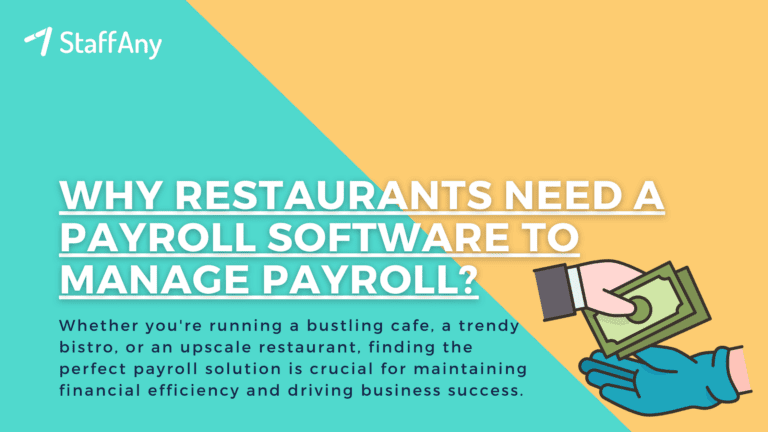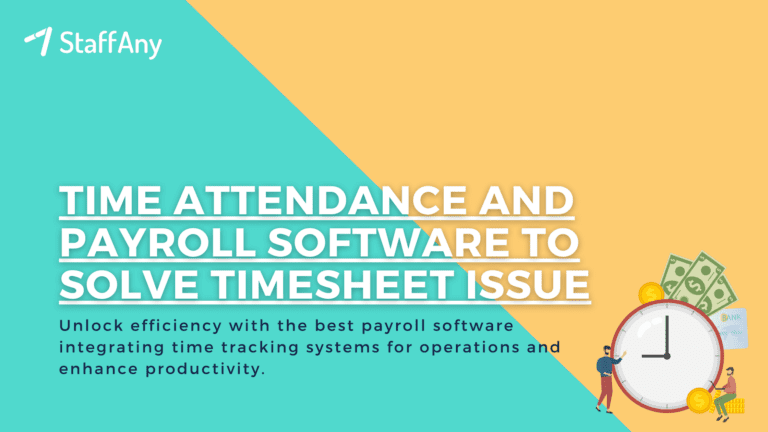In the dynamic landscape of modern businesses, the concept of staff welfare has emerged as a foundational pillar for fostering a resilient and thriving work environment. The profound significance of staff welfare is underscored by its potential to shape the trajectory of organisations, steering them towards unprecedented levels of productivity, employee engagement, and organisational growth.
This article delves into staff welfare meaning, its significance, and the objectives it seeks to achieve. Additionally, we explore strategies for effective staff welfare management, ensuring a harmonious workplace that fosters employee satisfaction and organisational growth. Let’s get started!
What is Staff Welfare?

Staff welfare meaning a holistic approach an organisation takes to ensure the health, happiness, and overall well-being of its employees. It encompasses many initiatives and policies, from ensuring safe working conditions to promoting work-life balance and providing access to necessary benefits. At its core, staff welfare encapsulates a commitment to safeguarding and enhancing the quality of life for employees.
This commitment involves multifaceted provisions, from ensuring occupational health and safety to fostering personal and professional growth opportunities. Staff welfare is not merely a contractual formality but a testament to the profound symbiosis between employers and employees, nurturing a harmonious ecosystem where well-being and productivity coexist synergistically.
Read more: The Importance of Workplace Safety in F&B
Why is Staff Welfare Important?
Staff welfare is not just a mere buzzword but a cornerstone of a thriving workplace culture. When genuinely cared for, employees are more likely to be engaged, motivated, and dedicated to their roles. This leads to increased productivity and job satisfaction.
Moreover, an emphasis on staff welfare demonstrates that an organisation values its employees not just as workers but as individuals with lives, families, and needs outside of work. This can foster loyalty and a strong sense of belonging, reducing turnover rates and creating a positive workplace atmosphere.
Read more: Employee Assistance Programs: Definition and Benefit
What are the Objectives of Staff Welfare?
Staff welfare is not just a superficial concept; it holds a multitude of objectives that significantly impact the workplace and its dynamics. Here are five key objectives that underscore the importance of prioritising staff welfare:
1. Providing Motivation
At the heart of staff welfare lies the objective of motivating employees. Motivation is the driving force that propels individuals to excel in their roles and contribute positively to the organisation. Employers can ignite a sense of purpose and enthusiasm among their workforce through well-structured staff welfare initiatives, such as recognition programs, skill development workshops, and performance-based rewards. When employees feel acknowledged and appreciated, their morale and commitment naturally soar, leading to increased dedication to their tasks and a heightened sense of job satisfaction.
2. Retaining Employees
Employee turnover can be costly for organisations in terms of financial resources and the disruption it causes to operational continuity. This is where staff welfare emerges as a crucial tool in retaining valuable talent. When employees experience an environment where their well-being is a priority, they are more inclined to form strong bonds with the organisation.
Effective staff welfare measures create a sense of belonging and loyalty that discourages employees from seeking opportunities elsewhere. Organisations can save on recruitment and training expenses by reducing turnover rates while maintaining a consistent and experienced workforce.
3. Increases Productivity
Enhancing productivity is a core objective of staff welfare initiatives. A healthy and content workforce will likely be productive, innovative, and efficient. Employers can achieve this by offering wellness programs, flexible work arrangements, and ergonomic workspace design.
These measures ensure employees’ physical well-being and contribute to their mental health, resulting in improved focus, creativity, and overall performance. An environment where employees feel supported and cared for motivates them to give their best efforts, resulting in higher output and better quality work.
4. Creating Goodwill
Staff welfare initiatives are pivotal in shaping an organisation’s internal and external reputation. When employees experience a genuine commitment to their well-being, they become ambassadors of goodwill.
Positive word-of-mouth from content employees enhances the organisation’s brand image and makes it an attractive prospect for potential hires. Additionally, a company prioritising staff welfare reflects a commitment to ethical and responsible practices, further enhancing its credibility in the eyes of stakeholders and the public.
5. Creates a Strong Bond between Employer and Employee
A strong bond between employers and employees is vital for a harmonious work environment. Staff welfare objectives include fostering a strong connection between the two parties. When employers demonstrate a sincere interest in the well-being of their employees, it cultivates trust and open communication.
This, in turn, leads to a collaborative and cohesive work atmosphere where feedback and ideas flow freely. A strong employer-employee relationship builds a foundation of mutual respect, resulting in increased job satisfaction and a willingness to go the extra mile.
Read more: 15 Employee Engagement Activities to Keep Them Motivated
How to Manage Staff Welfare?
Effectively managing staff welfare requires a strategic and comprehensive approach that addresses the diverse needs of employees. Here are five key steps that organisations can take to ensure the successful implementation of staff welfare initiatives:
1. Comprehensive Benefits Packages
One of the foundational aspects of managing staff welfare is the design and implementation of comprehensive benefits packages. These packages should encompass various offerings, from health insurance and retirement plans to paid time off and wellness programs.
The key is tailoring these benefits to match employees’ needs and preferences. Regularly review and update these packages to ensure they remain relevant and competitive in the ever-changing job market.
2. Flexible Work Arrangements
Recognising the importance of work-life balance, organisations should consider offering flexible work arrangements. This could include remote work, flexible hours, and compressed workweeks.
Such arrangements empower employees to manage their professional responsibilities alongside personal commitments better. A flexible approach demonstrates trust in employees and promotes a healthier work-life integration.
3. Employee Development
Investing in the growth and development of employees is a significant component of staff welfare management. Organisations should provide opportunities for skill enhancement, training programs, workshops, and continuous learning.
By offering avenues for personal and professional development, employers empower their workforce and enhance the organisation’s overall capabilities. This, in turn, leads to higher job satisfaction and increased loyalty.
Read more: 10 Best Training Plans for Restaurant Staff
4. Safe and Supportive Environment
A safe and supportive work environment is essential for effective staff welfare management. This involves prioritising physical safety through proper training, equipment, and ergonomic workspace design.
Equally important is addressing employees’ mental health needs by offering access to counselling services and mental health resources. Create an atmosphere where employees feel comfortable discussing their concerns openly, fostering a sense of belonging and trust.
5. Regular Feedback and Evaluation
Continuously assessing the impact and effectiveness of staff welfare initiatives is crucial for successful management. Employers should regularly seek employee feedback through surveys, focus groups, and one-on-one conversations.
This feedback provides insights into the aspects that are working well and those that may need improvement. Use this information to refine existing programs and introduce new ones that align with the evolving needs of the workforce.
In the tapestry of modern business, the thread of staff welfare meaning weaves a narrative of care, commitment, and success. By implementing strategies prioritising your employees’ health, well-being, and growth, you create a workplace culture that thrives and prospers. Remember, staff welfare isn’t a static concept; it’s a dynamic journey that evolves with the changing needs of your team.
As you embark on this journey, consider leveraging tools that simplify your efforts. Discover the power of StaffAny, a cutting-edge roster making app designed to streamline staff management and scheduling. With features tailored to enhance staff welfare and improve operational efficiency, StaffAny is the missing piece that can elevate your workforce management to new heights!











